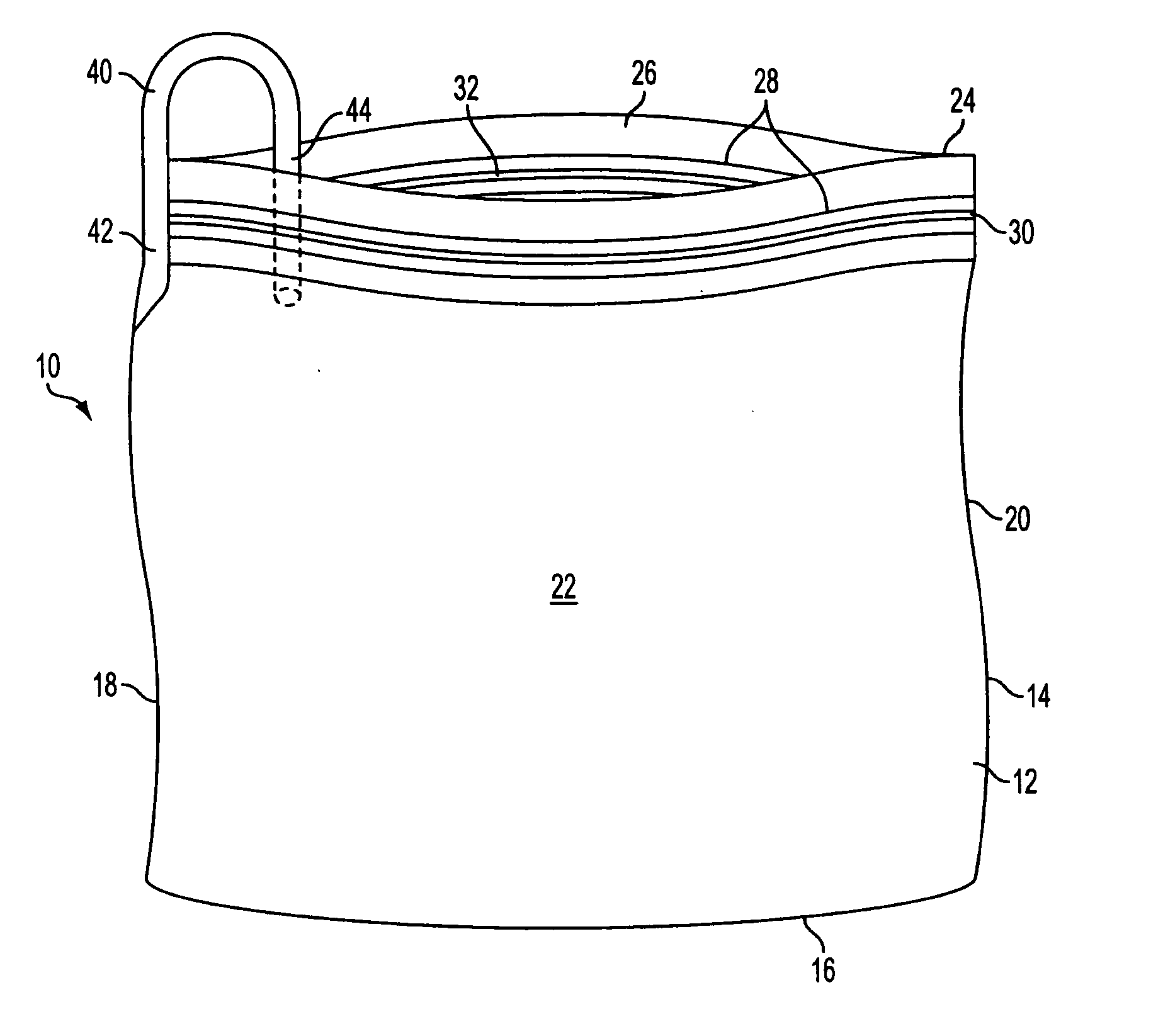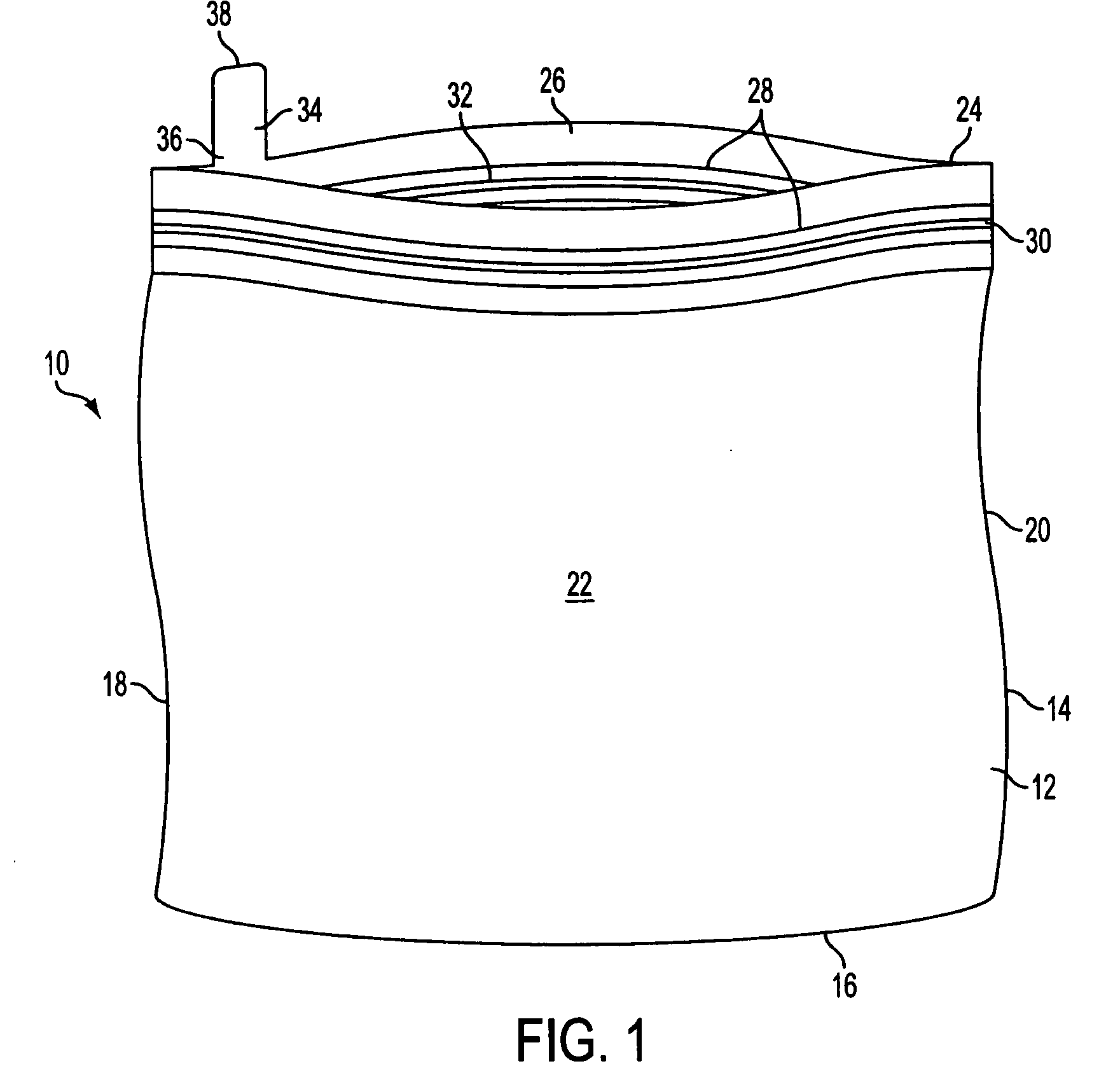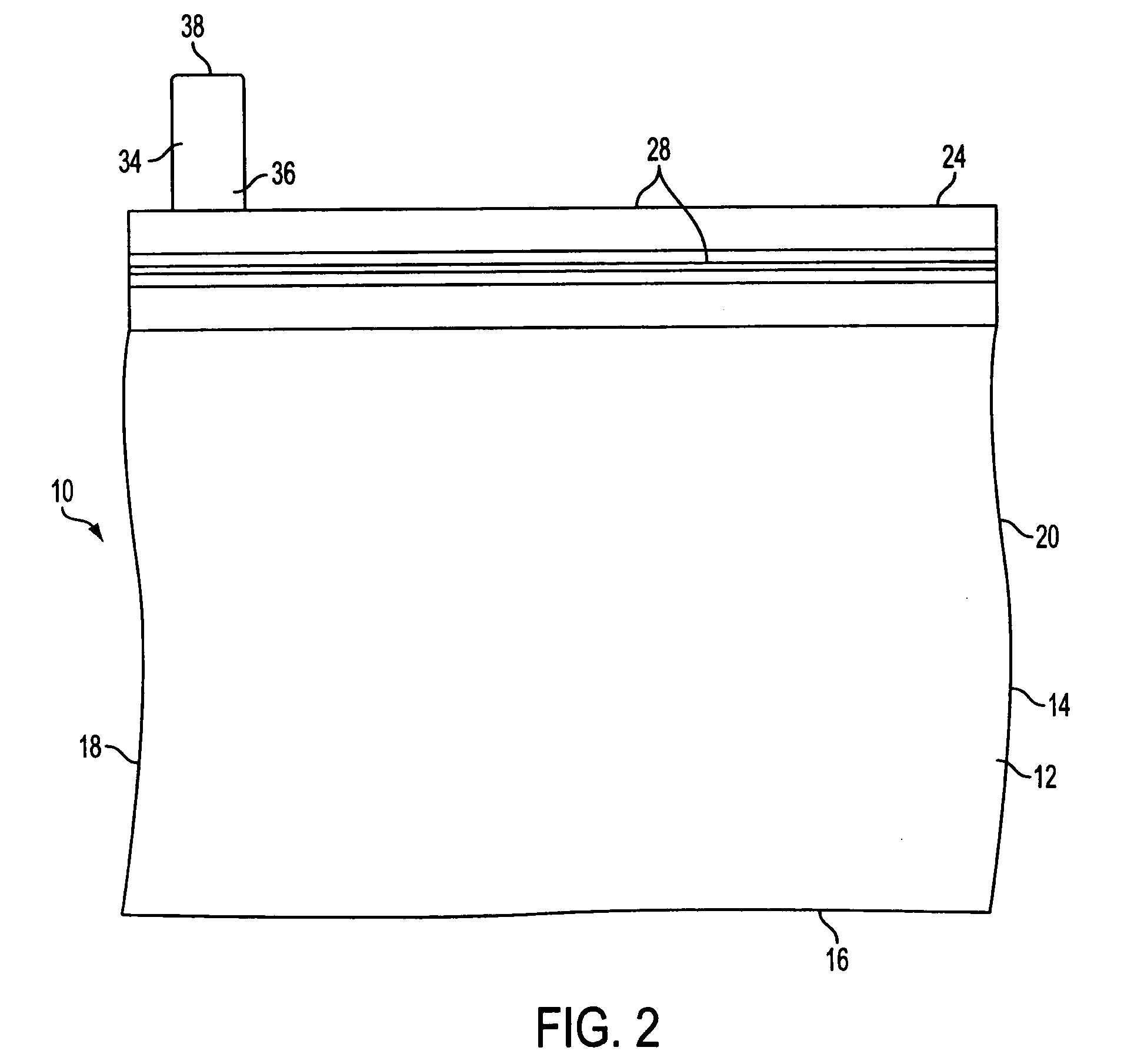Sealable bag with excess air evacuation blocking structure
a technology of blocking structure and sealing bag, which is applied in the direction of flexible container closure, ventilation means, transportation and packaging, etc., can solve the problems of affecting the quality of any food stored within the bag, and causing the volume of the bag, so as to facilitate the evacuation of excess air
- Summary
- Abstract
- Description
- Claims
- Application Information
AI Technical Summary
Benefits of technology
Problems solved by technology
Method used
Image
Examples
Embodiment Construction
[0032] With reference to the drawings, FIGS. 1-8 depict the preferred and other embodiments of the present invention, resealable bags 10.
[0033] Referring to FIGS. 1 and 2, the preferred embodiment of the present invention, the resealable bag 10 comprises a first panel 12 and a second panel 14, each panel being generally square or rectangular and having four edges. Said first and second panels 12, 14 are substantially permanently sealed, preferably heat-sealed, along three edges forming a bottom end 16, a left side 18, and a right side 20 of the bag 10, and thus forming a pouch 22. The fourth edge of the panels is not permanently sealed and forms a top end 24, defining an opening 26 when unsealed, thus allowing ingress and egress of items in and out of the pouch 22 through the opening 26. The top end 24 has an interlocking tongue and groove system 28 for selective sealing and unsealing the opening 26. The interlocking tongue and groove system 28 includes a tongue strip 30 and a groo...
PUM
 Login to View More
Login to View More Abstract
Description
Claims
Application Information
 Login to View More
Login to View More - R&D
- Intellectual Property
- Life Sciences
- Materials
- Tech Scout
- Unparalleled Data Quality
- Higher Quality Content
- 60% Fewer Hallucinations
Browse by: Latest US Patents, China's latest patents, Technical Efficacy Thesaurus, Application Domain, Technology Topic, Popular Technical Reports.
© 2025 PatSnap. All rights reserved.Legal|Privacy policy|Modern Slavery Act Transparency Statement|Sitemap|About US| Contact US: help@patsnap.com



